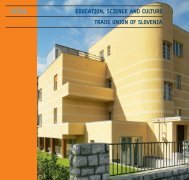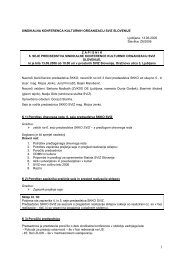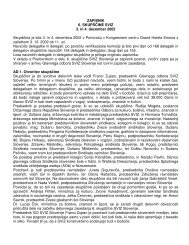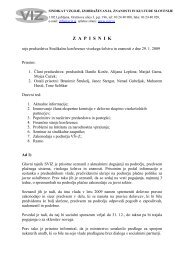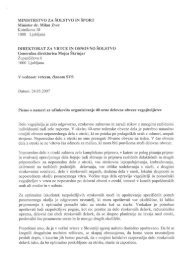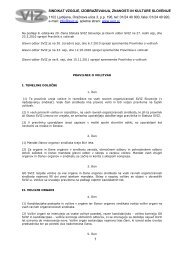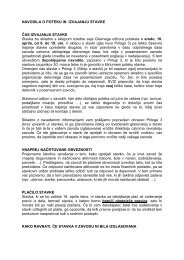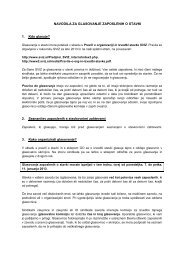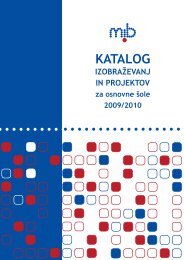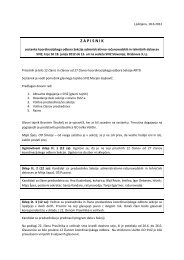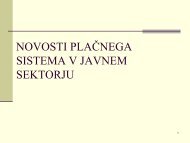Create successful ePaper yourself
Turn your PDF publications into a flip-book with our unique Google optimized e-Paper software.
PROGRAM / PROGRAM<br />
94<br />
As a composer Ralph Vaughan Williams stands between Elgar and Britten.<br />
During his lifetime, change and revolution not only marked European music,<br />
but in two catastrophic world wars the very social foundations of the entire<br />
world were forcefully shaken. Amidst a feeling of ‘the world gone crazy’ Williams<br />
sought firm roots for his art in so-called ‘national music’. He asserted<br />
that artistic roots must be “firmly anchored in one’s homeland, and if that<br />
land can give you something individual you can gain the entire world without<br />
losing your soul”. The two foundations of English national music – folk music<br />
and the music of the Elizabethan era – where amongst the main sources of<br />
Williams’s inspiration. Even today, music histories describe Williams as typically<br />
‘English’: he is the “apotheosis of Englishness”, his music is “the most<br />
individual in the history of British music since Purcell”.<br />
In the opinion of music historians, the English essence is also that which gave<br />
rise to Williams’s idyllic, dreamy pastoral romance The Lark Ascending from<br />
1914 (revised in 1920). The orchestral version of this work was performed for<br />
the first time by Marie Hall, to whom it is dedicated. The music is based on<br />
verses from the poem of the same name by romantic poet George Meredith,<br />
who describes the joyous flight of a lark above a valley and the bird’s song in<br />
“silver chains of sound”. The poet compares the lark with wine that fills his<br />
goblet – the valley – and with which beneath the heavens people also raise<br />
themselves up. The eternally changing song of the lark and the ecstasy of<br />
its singing is portrayed in the onomatopoeic romance in the slow Andante<br />
sostenuto. This flows into the Allegretto tranquillo, a faster section inspired<br />
by folk music. But here the pastoral idyll is just illusion and nostalgia: it is only<br />
with difficulty that the work actually believes in the idyll, as it was commenced<br />
on the outset of the First World War and was completed after it.<br />
Czech composer Pavel Haas commenced his music education at the Philharmonic<br />
School in Brno, and in 1919 enrolled to study composition at the<br />
Brno Conservatory, where he was most influenced by his studies with Leoš<br />
Janáček. The latter made his students familiar with the harmony and melody<br />
of Moravian folk music. The melodic and rhythmic elements of speech and<br />
its setting to music also became one of the main foundations of Haas’s approach<br />
to composition. Although Janáček’s influence on the young composer<br />
was enormous, Haas subsequently developed an entirely personal style.<br />
In addition to Moravian folk song, his sense of melody was marked by the<br />
singing in Jewish synagogues and by Gregorian chant, while rhythmically<br />
he was influenced by an interest in contemporary western European musical<br />
streams and jazz. Encouraged by his wife Soňa, Haas dedicated himself<br />
entirely to music in 1935. However, due to his Jewish origins, he was deported<br />
to the Terezín concentration camp in 1941, where he composed at least eight<br />
works, of which only three are extant, including the Study for String Orchestra<br />
and the Four Songs on Chinese Poetry. Haas died in a gas chamber in the<br />
Birkenau concentration camp in 1944. He did not leave an extensive opus,<br />
but he is nonetheless one of the key representatives of Czech music, linking<br />
the national tradition with the new achievements of international music.



